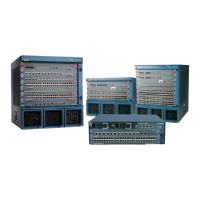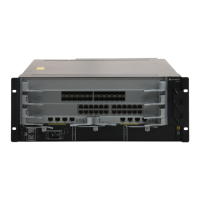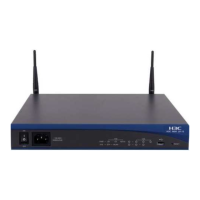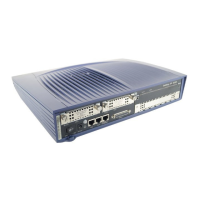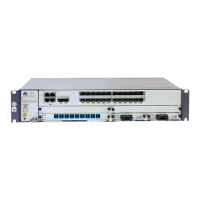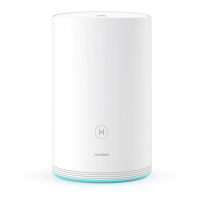ip address 10.1.1.6 255.255.255.0
#
interface XGigabitEthernet0/0/1
port hybrid pvid vlan 13
port hybrid untagged vlan 13
#
bfd btoa bind peer-ip 10.1.1.5 interface Vlanif13
discriminator local 2
discriminator remote 1
commit
#
return
5.9.3 Example for Configuring Multi-Hop BFD
Networking Requirements
As shown in Figure 5-3, a BFD session is used to test the multi-hop path between Switch A and
Switch C.
Interfaces of the S6700 are Layer 2 interfaces. To configure multi-hop BFD, you need to add an
interface to a VLAN, create a VLANIF interface, and assign an IP address to the VLANIF
interface.
Figure 5-3 Networking diagram of multi-hop BFD
XGE0/0/1
SwitchA
SwitchB SwitchC
XGE0/0/1
XGE0/0/1
XGE0/0/2
VLAN 10 VLAN 20
Configuration Roadmap
The configuration roadmap is as follows:
1. Configure a BFD session on Switch A to detect the multi-hop path from Switch A to Switch
C.
2. Configure a BFD session on Switch C to detect the multi-hop path from Switch C to Switch
A.
Data Preparation
To complete the configuration, you need the following data:
l Peer IP address bound to the BFD session
l Local and remote identifiers of the BFD session
l IP address of VLANIF 10 on Switch A: 10.1.1.1/16
l IP address of VLANIF 10 on Switch B: 10.1.1.2/16
l IP address of VLANIF 20 on Switch B: 10.2.1.1/16
l IP address of VLANIF 20 on Switch C: 10.2.1.2/16
Quidway S6700 Series Ethernet Switches
Configuration Guide - Reliability 5 BFD Configuration
Issue 01 (2011-07-15) Huawei Proprietary and Confidential
Copyright © Huawei Technologies Co., Ltd.
209

